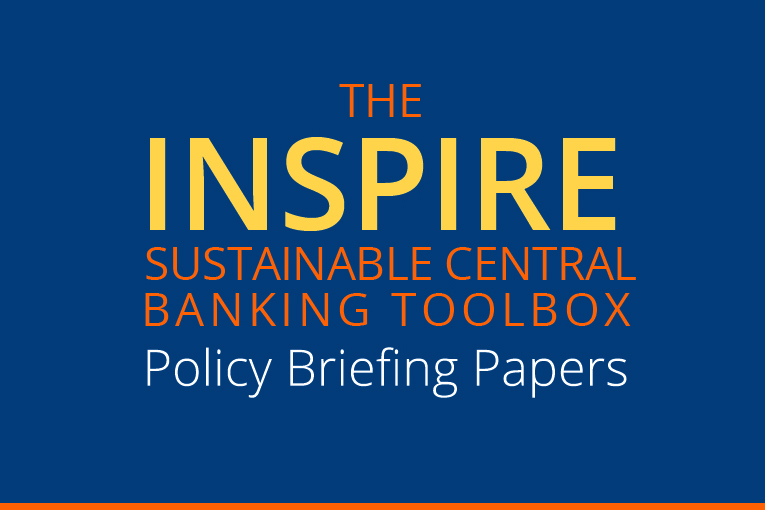Aligning financial and monetary policies with the concept of double materiality: rationales, proposals and challenges

Download
INSPIRE Central Banking Toolbox – Policy Briefing no. 5
The emerging concept of double materiality offers an opportunity to think more comprehensively about the role of the financial system in urgently addressing the ecological challenges of our times.
Although it has gained ground over the past few years, the ways in which double materiality should be operationalised remain less clear.
This paper outlines three rationales that support the use of double materiality, their policy implications and the possible theoretical and practical challenges they raise.
Main messages
- Double materiality builds on the historical accounting and auditing convention of materiality and expands it by considering that non-financial and financial corporations are not only materially vulnerable to environment-related events and risks, but also materially contribute to enabling dirty activities and environmental degradation.
- The authors identify three different approaches to double materiality, each of which leads to different policy proposals and generates its own set of challenges:
- The idiosyncratic risk perspective looks at environmental impacts in relation to the financial risks that individual financial institutions may face as a result.
- The systemic risk perspective considers double materiality without assuming that a financial institution’s contribution to environmental degradation is always mirrored by its own vulnerability to future risks.
- The transformative perspective moves beyond a risk-based approach to consider that to address environmental challenges, private and public financial actors have a duty to proactively support the ecological transition, including by contributing to the transformation of accounting and auditing conventions around materiality.
Policy implications
- One key policy proposal from an idiosyncratic risk perspective is for regulators to require financial institutions to systematically disclose both their environmental impacts and the main financial risks that arise from such impacts.
- The systemic risk perspective is less operational for private actors, but several policy proposals fall within its scope, such as capital requirements for the banking and insurance industries.
- A transformative approach would, for example, see financial regulators proactively supporting practices that are deemed more compatible with the ecological transition, such as banning loans for dirty activities.
- As jurisdictions are adopting different positions on double materiality, it is important to ensure that diverging views do not prevent the development of consistent approaches.
- The oppositions and nuances to double materiality should not detract from the need for urgent action at all levels to address environmental risks.
This paper is part of the INSPIRE Sustainable Central Banking Toolbox, which is designed to support central bankers and financial supervisors in calibrating monetary, prudential and other instruments in accordance with sustainability goals as they address the ramifications of climate change and other environmental challenges. The papers have been written and peer-reviewed by leading experts from academia, think tanks and central banks and are based on cutting-edge research, drawing from best practice in central banking and supervision.

